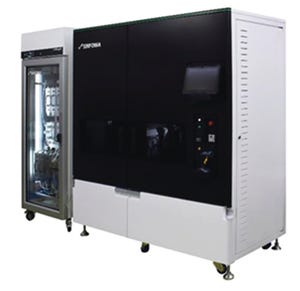November-December 2021 Featured Report
HTTPS://WWW.STOCK.ADOBE.COM
Artificial intelligence (AI) is a lot more sophisticated today than it was just a few years ago. Its impacts are felt outside of technology applications such as computing, malware, and natural language processing. For example, Google’s AI (called DeepMind) recently solved one of biology’s greatest problems: It determined a protein’s three-dimensional shape from its amino acid sequence. Now, AI is making a foray into drug development processes. Drug development is a risky, expensive, time-consuming, yet often lucrative venture. The costs in time and money are staggering: A drug can take five years to 15 years to develop and commercialize at a cost of hundreds of millions to billions of dollars.
Drug development comprises four major stages: discovery, testing, review, and postmarket-entry safety monitoring. During drug discovery, different exploration methods are used to assess potential drug candidates and predict which of those options will be most successful for treating a giv...
HTTPS://STOCK.ADOBE.COM
Artificial intelligence (AI) in healthcare and biopharmaceutical industries still is in early stages of development and use, yet proper data management is critical to successful implementation at any stage of the enterprise continuum. AI is applied to help researchers understand and analyze biology, diagnose diseases, design new drugs, and predict clinical potential and treatment outcomes. AI has been applied in the discovery and development of novel drugs and for repurposing existing drugs, manufacturing different types of drug products, and optimizing biocommodity production. It has become an essential tool in assessing real-world evidence and for data processing using “-omics,” next-generation sequencing, clinical trial design, and personalized patient management. AI also is used in clinical applications for maintaining patient electronic health records (EHRs), population health management, predictive care guidance, digital imaging, digital pathology, and diagnostics.
Healthcare...
Digital transformation is at the heart of many biopharmaceutical companies’ strategies for ongoing success. However, the definition of
digital transformation
and what it consists of differ within the bioprocess industry (and might even vary within a single company), specifically as it applies to the overall value chain from R&D to clinical trials, manufacturing, supply chain, and eventually commercial operations. To provide a perspective on what digital transformation could look like in bioprocessing, we present a case study about an exploratory innovation project that showcases the application of digital twins in bioprocess development and other industries (e.g., software development).
Digital twins are at the core of many new approaches in digitizing nontechnical industries. Negri et al. (
1
) state that a digital twin is “meant as the virtual and computerized counterpart of a physical system that can be used to simulate it for various purposes, exploiting a real-time synchronization of the sensed dat...
Examples of sensor integration into different single-use vessels and bioreactors
A process analytical technology (PAT) strategy involves defining critical process parameters (CPPs) of a biomanufacturing process that influence critical quality attributes (CQAs) and controlling those CPPs within defined limits. Doing that enables consistent product quality and helps companies reduce waste and costs. Glucose is an important CPP in bioprocessing and cell therapy. Glucose often is fed as a bolus addition based on daily off-line measurements, but that can lead to high glucose fluctuations and to excessive glucose feeding, which can increase toxic byproducts such as lactate and ammonia. However, insufficient feeding can lead to nutrient depletion and a risk of carbon-source limitation.
By increasing the frequency of off-line sampling and subsequent bolus additions, glucose can be maintained at low concentrations. That approach, however, increases workload and contamination risks. Care must be taken because gluco...
CellQualia ICP System
HTTPS://WWW.CELLQUALIA.COM/ENG
Cells are used as raw materials, intermediates, and final products in biopharmaceutical and cell therapy manufacturing. Because living cells are always in a dynamic state, their characteristics must be kept within specified ranges throughout bioprocessing to preserve their utility. Cell population expansion without changing the original cell properties is key for obtaining the required number of cells at the next step. However, limited process data are collected during the expansion phase — information that could be used to understand and control fully this important step.
Two major cell types used in cell therapy manufacturing are mesenchymal stem cells (MSCs) and pluripotent stem cells (PSCs) such as embryonic stem cells (ESCs) and induced pluripotent stem cells (iPSCs). MSCs are obtained from donors and expanded without processing before administration to patients. PSCs are expanded to make master and working cell banks (MCBs and WCBs), which are use...
Subscribe to receive our monthly print or digital publication
Join our 70,000+ readers. And yes, it's completely free.










